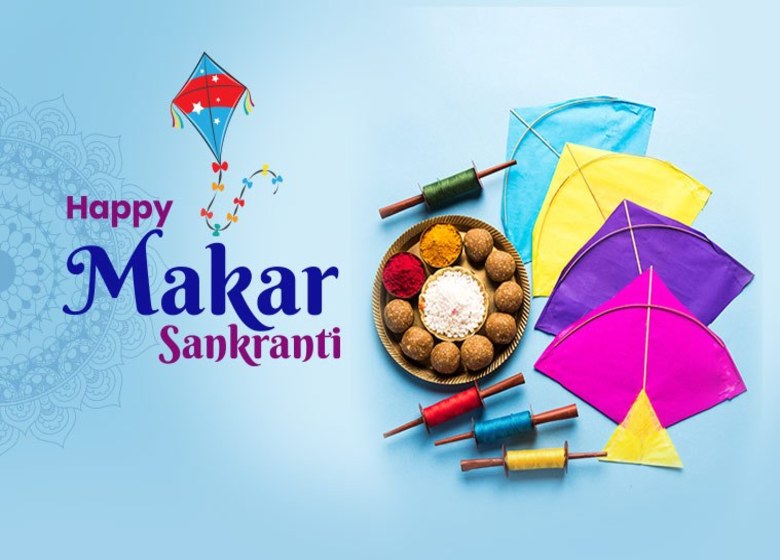Makar Sankranti has a geographical significance of it. The Sun starts to travel northwards on this day. It leaves the Tropic of Cancer to enter the Tropic of Capricorn (so the name ‘ Makar’ which corresponds to the zodiac sign ‘ Makar’ meaning Capricorn). However, Makar Sankranti marks the start of the spring season as well. Scroll down to read more about the importance of Makar Sankranti.
Importance Of Makar Sankranti
Makar Sankranti is a big harvest festival that marks the start of India’s spring season. The festival is known by various names in different parts of India, such as Lohri in North India and Pongal in the Southern regions. Earlier, Aryans had started to celebrate this day as an auspicious day. This day is considered, even in the Mahabharata epic, to be an auspicious one with great significance. Bhishma Pitamah struggled a lot with his life after he was wounded in the war, until the beginning of Uttarayan. He entered heavenly abode in this auspicious period. People who die on this day are believed to have attained Moksha or salvation
Why Makar Sankranti is Celebrated?
Makar Sankranti marks the end of the season of harvest and the start of the spring season. On this auspicious day, together with Lord Vishnu and Goddess Mahalaxmi, the Sun God is worshipped throughout the country The sun enters the sign of the Capricorn sun (Makara), and the term’ Sankranti’ means Sun’s movement from sign to sign. When the sun moves from Dakshinayana to Uttarayan (Tropic of Cancer to Tropic of Capricorn), it marks the beginning of the spring season, according to the lunar calendar. The festival is also believed to mark the inauspicious period starting in mid-December. Many Hindu households only perform religious ceremonies after Makar Sankranti’s celebration.
Date Of Makar Sankranti
It is one of the few Indian festivals held on a fixed date, i.e. every year on January 14. Every year it occurs on the same day as it follows the solar calendar.
Traditions of Makar Sankranti
1. Exchange Of Sweets Made of Jaggery
Preparing and sharing Jaggery sweets is one of the traditions that Makar Sankranti follows. The explanation for this is that sugar cane is harvested in the harvest season as the first crop and then converted to Jaggery. Then sweets are prepared using this Jaggery and offered to the deity as’ prasadam’ or’ naivedyam.’ It is an act in which farmers are thankful for a bountiful crop to the deities and Mother Nature.
2. Use of Til (Sesame Seeds)
There is a spiritual reason for this activity. According to the Hindu scriptures, those who add sesame oil to the body before the bath on Makar Sankranti’s day and then bathe in water sprinkled with a handful of sesame seeds will be cured of all their sins. In addition, drinking water mixed with sesame seeds would help one improve his spiritual tendencies by offering sweets made with sesame seeds to the deities and among each other. This notion holds true somewhere because Ayurveda says sesame seeds consume negative energies (tamsik) and release positive (sattvik) energies.
3. Halwa Exchange
On Sankranti, people exchange, among themselves, multi-colored sweet preparations known as’ Halwa’ in Marathi. It’s basically sugar granules that are coated with sugar syrup. In Marathi, people greet each other while exchanging these tasty tidbits, saying’ tilgul ghya–goad goad bola.’ This sentence is spoken as a sign of goodwill, and the underlying meaning is that’ let’s forget.
4. Flying Kites
Makar Sankranti is the day when the sun begins rising northwards i.e. towards Uttarayana. And according to Ayurveda, the rays have a healing effect on the body when the sun moves in Uttarayana. So when people go outside to fly kites after long winter months, they receive the benefits of the exposure to the sun unknowingly. Our bodies expose themselves to the sun and are conditioned by all the diseases that afflicted them in the winter season–cold, cough and dry skin. On this good day, you can see various colors and types of kites decorating the sky also called the Kite Flying Festival in India. In Gujarat and Maharashtra, it is particularly popular. Usually, the kites are made of lightweight paper and bamboo in the form of a rhombus.
Makar Sankranti’s festival is said to bring happiness, happiness, and prosperity, particularly among the community of farmers. Share the festival’s sense with your children this year so they can enjoy it even more fervently. As well as gain insights into our country’s rich cultural history.













